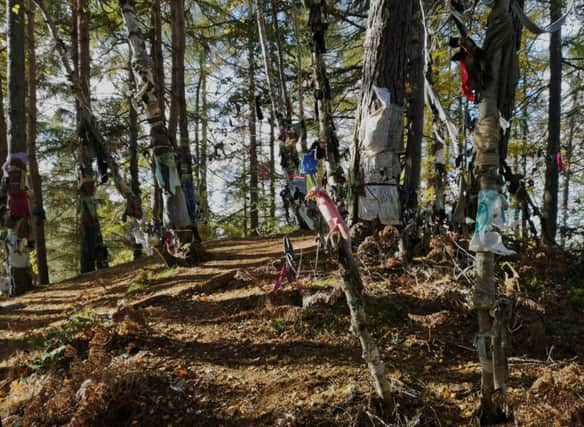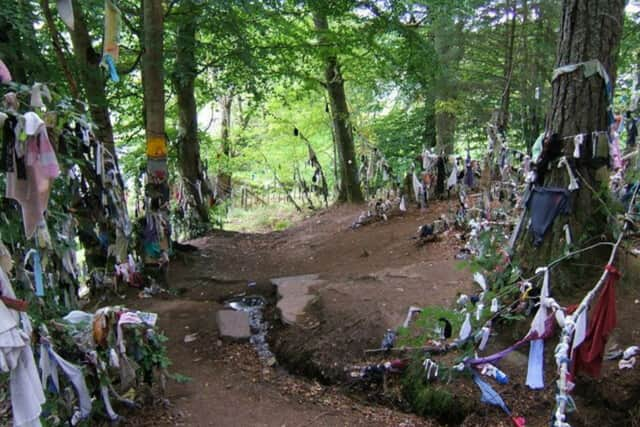The Clootie Well in Scotland: Why did ancient Celts hang rags on trees? Folklore explained


To the northwest of Munlochy on the Black Isle rests this intriguing pagan ritual site that predates the arrival of Christianity in Scotland. When driving nearby, motorists on the A832 north of Inverness will notice rags of clothing draped over the trees on the side of the road and this is an ancient Celtic tradition that endures to this day even in modern spirituality.
Known as the Clootie Well, this grove of trees is decorated in this haunting fashion as it is thought to call upon water spirits to grant healing or wishes to the believer. Such sites are not unique to Scotland and can be found in other Celtic hotspots of the British Isles such as Cornwall or Ireland. This one, however, is widely considered the most popular and has hit headlines in recent years after fierce debate that sparked from a ‘tidy-up’ of it.
Advertisement
Hide AdAdvertisement
Hide AdIt is thought that the good fortune of hanging a cloot can be reversed by removing one.
To learn more about this fascinating site entrenched in Scottish heritage, here is an overview of the Clootie Well including how the custom works, how old it is, and why people want it removed.


What is the Clootie Well?
Situated in Munlochy near Inverness in the Scottish Highlands, the Clootie Well is a natural spring of which the water has been used for ‘healing purposes’ for centuries. It is estimated that the well’s use as a holy site dates back to the time of Saint Curetán (Boniface) who was a missionary in Scotland around AD 620.
When visitors descend into the forest of the Clootie Well the site immediately invokes an eerie yet tranquil atmosphere as it is shrouded in the shadows of thousands of cloth rags knotted onto the trees. In the Scots language a ‘cloot’ refers to a cloth or rag.
Legend of the Clootie Well
As with Celtic traditions of Spring, Lammas Day or other spiritual events like Halloween, the Clootie Well was often visited at ‘special’ times throughout the year or when it was gravely necessary if someone was ill. Scottish folklore is full of tales of spirits that were believed to roam the site with this source of clean water being used for divine healing for millennia.
It is said that pilgrims would travel here and perform a ritual that entailed circling the well thrice before splashing the water, praying and tying a cloth rag onto a nearby tree. The BBC explains: “Clootie wells and rag trees can be traced back to pagan and early Christian practices around healing.
“The belief is a person will recover from an illness as the rag, dipped in a nearby holy well, disintegrates.”
According to Scotland Itinerary Planning: “Robert Chambers, the author of Book of Days (1869), reported the well to the east of the current Munlochy site, called Craigach Well.
Advertisement
Hide AdAdvertisement
Hide Ad“He describes the scene on the first Sunday of May as ‘like a fair’, with English, Scots, and Gaelic all spoken as the pilgrims made their offerings, also noting that each person drank from the well.”
In memory of the Scots who washed their wounds in the well’s waters after the Battle of Culloden, a bench can be found that reads: “It wasn’t the clear water of hope, the well of the wood spilled that day”.
Why were the rags removed?
The Clootie Well was ‘tidied up’ by a ‘mystery person’ last year which angered many people as it was an unscheduled event. The local community page on Facebook saw some members call the individual’s actions a ‘desecration’ while others acknowledged that there were many non-biodegradable products littering the site.
In their article last year, the Guardian reported that Claire Mackay - a local herbalist - said: “I’m sure the person who cleared up thought they were doing something good but the fact they took it upon themselves, weren’t a local and did it without the permission of Forestry and Land Scotland [which manages the site] has upset a lot of people.”
She continued: “The clean-up should have been a community decision, but now we can treat it as a clean slate and hope it has planted that seed about the need for people to leave more natural things.”
One of the regional visitor services managers for Forestry and Land Scotland, Paul Hibberd, noted that the well already has a sign asking visitors to leave “small, biodegradable offerings” only. He added that local rangers already remove “inappropriate items” and acknowledged the “strong connection” that people felt for the location.
Hibberd explained, however, that the debris build-up does paint a concerning picture for how much plastic is in modern clothing.
Where are the other Clootie Wells?
Celtic locales such as Scotland, Ireland, Wales, the Isle of Man, and Cornwall etc. have all been linked to the tradition of draping rags within local sacred water sites. In Cornwall (the heartland of the Cornish language) just west of Madron village, there is another ‘clootie well’ which has reportedly attracted visitors for thousands of years.
Another example is St Brendan’s Rag Tree and Holy Well which can be found at Clonfert Co Galway in Ireland.
Comments
Want to join the conversation? Please or to comment on this article.
